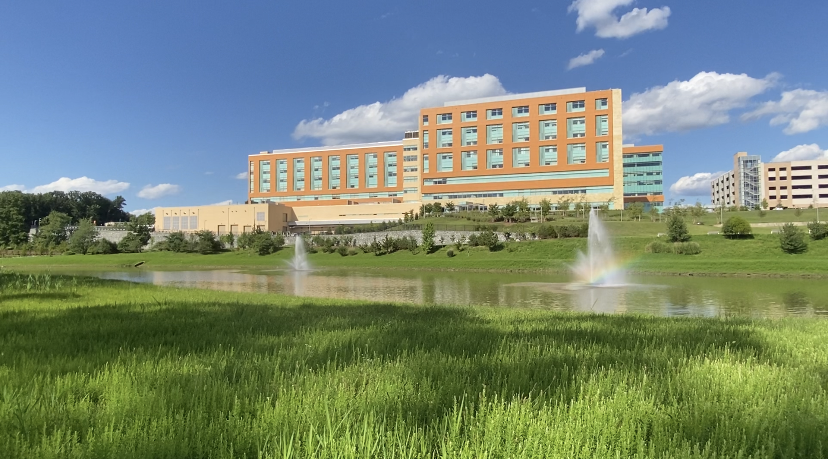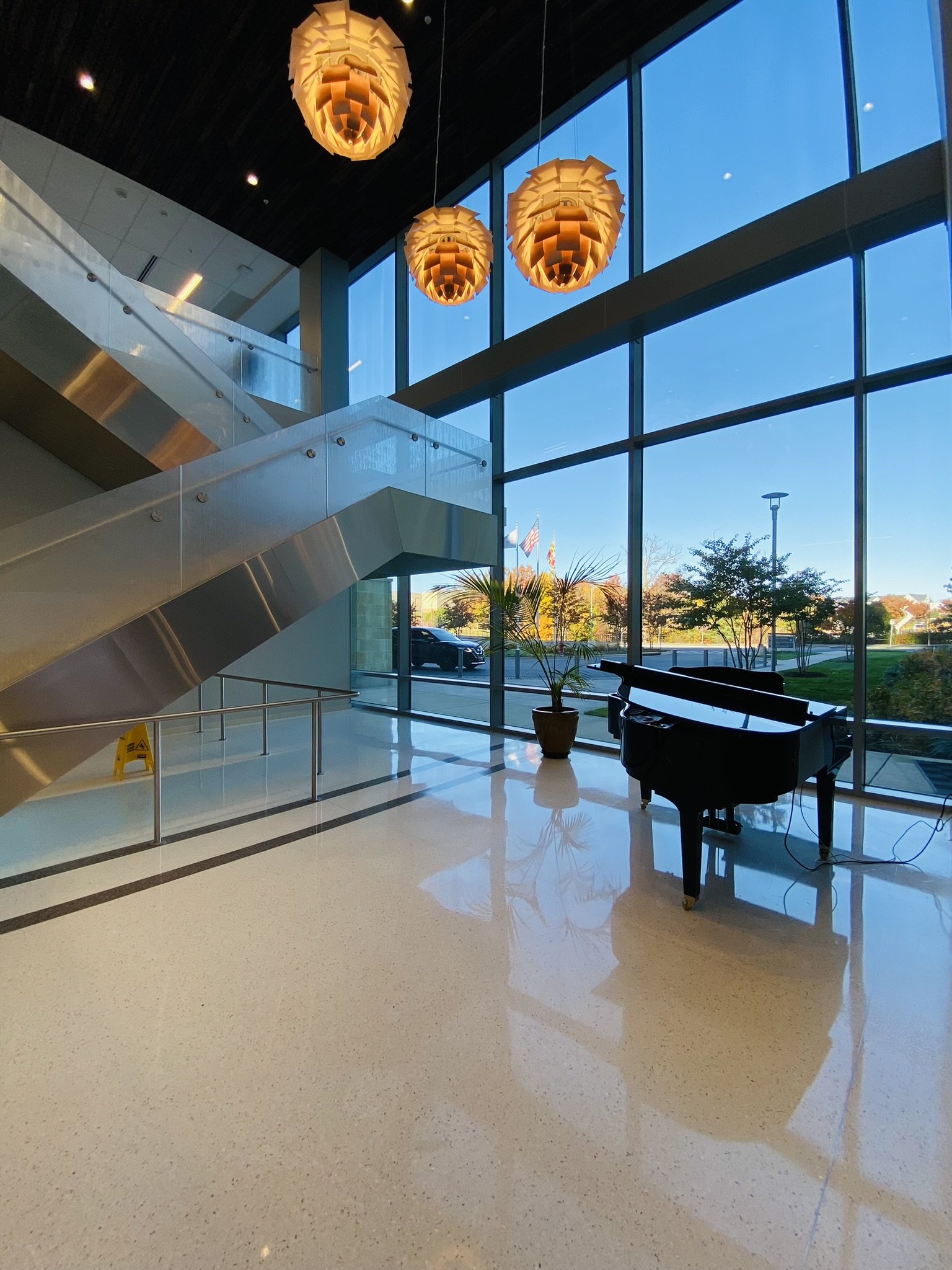Background Story: USGBC hosted an education session discussing the sustainability trend in healthcare and sustainable building.
Who were there
Erika Herz, Office of Sustainability, University of Virginia
Walt Vernon, Mazzetti
Lerissa McFall, USGBC
Sade Dennis, Director, Market Transformation & Development, USGBC
Dr. Matthew Trobridge, University of Virginia and International Building Institute
What's In the archive?
The 2015 County Health Ranking (CHR) report provided 35 measures for 45 states and compiled the collected data into four health factors and one health outcome score. (source: the National Library of Medicine)
By the number
The CHR study found that clinical care only contributes to 16% of the population's general health outcomes. (The social economic factor, health behavior, and physical environment contribute 47%, 34%, and 3%, respectively)
Why it matters
It matters if we are the health care delivery organization. The social-economic factor has contributed to the highest impact on the public's overall health.
It matters if we are the building designers. We contribute only 3% of public health and well-being but produce nearly 40% of all carbon dioxide emissions globally. Moreover, we must ask these questions after looking at CHR's number.
Question 1: What are the specific design criteria in this 3% of the physical environment that a building designer can contribute to?
Perhaps, LEED v4.1 already has the answer. Several specific credits are explicitly designated to the healthcare buildings under LEED v4.1. These are the example credits.
Integrative Project Planning and Design.
Place of Respite.
Direct Exterior Access.
PBT Source Reduction-mercury, a prerequisite.
PBT source reduction- mercury.
PBT source reduction- lead, cadmium, copper.
Furniture and medical furnishing.
Design for flexibility.
Question 2: If the physical environment only constitutes 3% of our overall health outcome, what else can we do (or don't) to maximize our contribution to enhance general well-being?
We could develop an environment that allows us to form healthy habits constituting 34% of overall health outcomes. For example, WELL has several features that enable users to establish a healthy routine easily. These features are examples.
Site Planning and Selection
Civic Engagement
Circulation Network
Take Adventist Hospital in White Oak, Maryland, for example. The hospital is located downstream of Paint Branch Creek. The onsite retention pond, which received the creek water, created a perfect view for all users nearby. The designers planned a 1-mile walkway around this basin. A pavilion and wellness equipment are also installed along the walking path for people to relax, rest, and exercise. (V05 Site Planning and Selection, site with pedestrian-friendly street)
During warm weather, the hospital hosts a "concert by the lake." The audience will sit at the uphill lawn that faces the lake and enjoy the music.(C11 Civic Engagement, Promote Community Engagement)
We are all familiar with how engaging with music and art can directly impact our limbic system and control emotions. Inside the hospital, the designers use one open staircase next to a two-story high window to enhance the overall aesthetics of the lobby. They also placed a self-playing piano that performs programmed light music. (V03-Circulation Network, Design Aesthetic Staircase)
What kind of public benefit can we expect when we deploy sustainable strategies?
The guest speaker, Matthew Trobridge, shared his perspective on the "public benefit," which I find worth noting. He realized that while we talk about public benefit, we might need to think from a fiduciary position. The public benefit does not merely mean what we've done is great for the environment. It also means that we are formally setting up a structure where we can take other issues into account rather than pure profit during our decision-making process. Addressing health and well-being has become part of managing the material of many real estate assets that we could defend as part of our fiduciary responsibility.
What could a "fiduciary" mean in a building project?
Use the Butaro Hospital desgined by MASS in Rwanda as an example.
The hospital was opened in 2011. This 150-bed hospital was located in the Bureta District, with a population of little over 340,000. The project has provided the added benefit of creating jobs and community engagement. The building construction used almost 4000 local people, from excavations to construction and post-occupancy management. All workers have been provided food, water, and healthcare during the project phase. That means one of every one hundred town residents have been benefited from such a project.
Moreover, the Butaro Hospital has incorporated cost-effective features to minimize the risk of infection. They used simple solutions such as eliminating the interior corridor, arranging the circulation path against the windows, and making each bed facing toward the view. They also install large operable windows and large radius fans to keep the frequent air exchange.
Final: The Bigger Picture
Even we've been trying hard to avoid using more energy. From lead-contained paint to interstate highways, we are inevitably exposed to toxins or will spend carbon when constructing something because we constantly exploit earthly resources and use materials.
However, there is always a silver lining in everything. When we build things and create the gap in the sustainability cycle, the trees and landscapes can also fill the gap if we keep our construction and planting speed balanced. With the same concept as fiduciary, the next time we look at the land that we, fortunately, possess on earth, we might see that as an opportunity to build stewardship that can last generations.
By the way…
Other sustainable design guides can also help our health and well-being in general. Again, using the Adventist Hospital at White Oak, for example, many of their onsite features have already encompassed the design to support our health and well-being.
Notes and References:
Buildings and construction account for approximately 37% of all carbon dioxide emissions in the world, according to the 2021 Glbal Status Report published by the UN Environment Program
You can read more about Butaro Hospital via Mass Design Group.org
Detailed drawing and story about Butaro Hospital via Archidaily.
For the entire Sites v2 reference guide, please visit Sustainable SITES Initiative.






